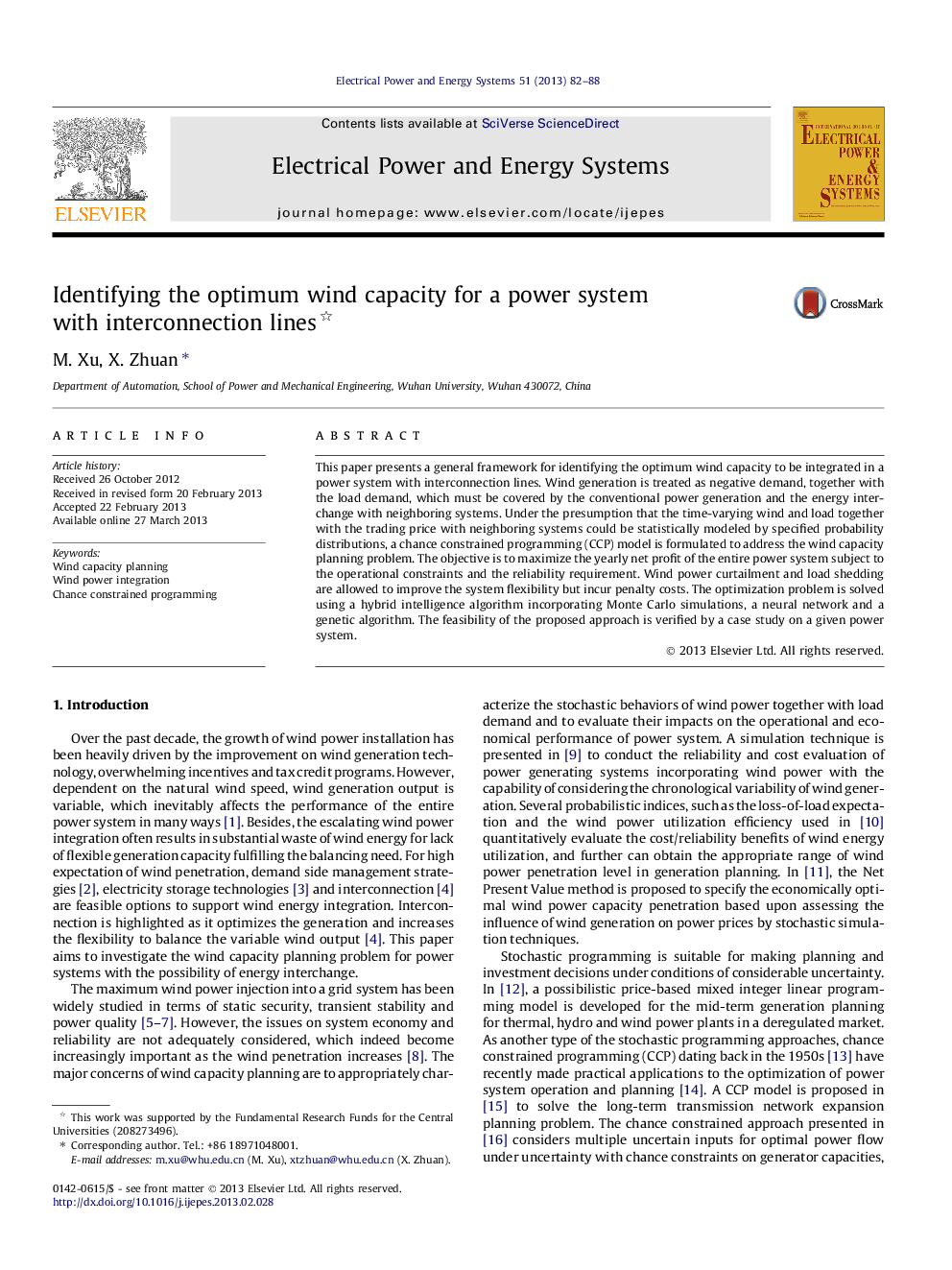| Article ID | Journal | Published Year | Pages | File Type |
|---|---|---|---|---|
| 400442 | International Journal of Electrical Power & Energy Systems | 2013 | 7 Pages |
•We develop a chance constrained programming (CCP) model for wind capacity planning.•Interconnection is highlighted as an option to improve system exibility.•The uncertainties on demand, wind and import/export prices are considered.•The impacts of wind power on system economy and reliability are evaluated.•A hybrid intelligent algorithm is employed to solve the CCP problem.
This paper presents a general framework for identifying the optimum wind capacity to be integrated in a power system with interconnection lines. Wind generation is treated as negative demand, together with the load demand, which must be covered by the conventional power generation and the energy interchange with neighboring systems. Under the presumption that the time-varying wind and load together with the trading price with neighboring systems could be statistically modeled by specified probability distributions, a chance constrained programming (CCP) model is formulated to address the wind capacity planning problem. The objective is to maximize the yearly net profit of the entire power system subject to the operational constraints and the reliability requirement. Wind power curtailment and load shedding are allowed to improve the system flexibility but incur penalty costs. The optimization problem is solved using a hybrid intelligence algorithm incorporating Monte Carlo simulations, a neural network and a genetic algorithm. The feasibility of the proposed approach is verified by a case study on a given power system.
